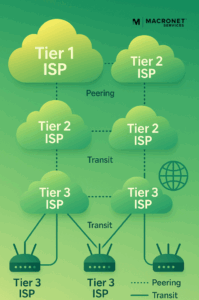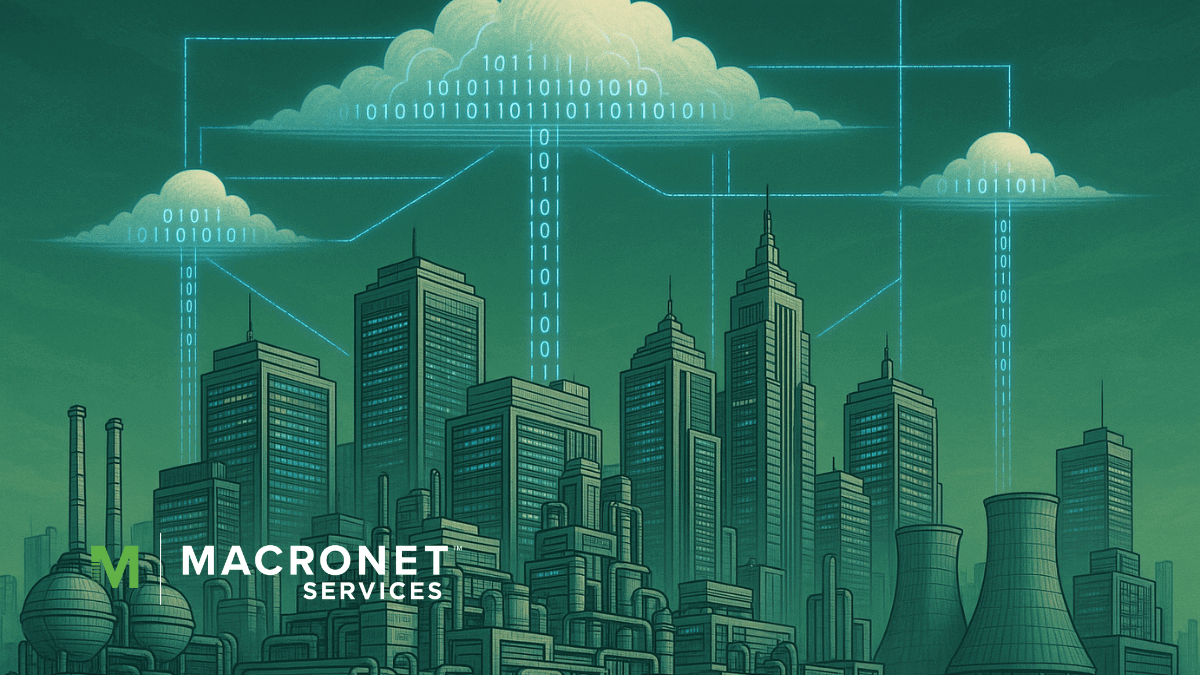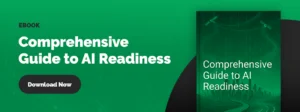Tier 1 vs Tier 2 vs Tier 3 ISPs Explained: The Complete Guide for IT Leaders
Why ISP Tiers Matter
When IT leaders design global networks, migrate workloads to the cloud, or troubleshoot latency issues, understanding the hierarchy of Internet Service Providers (ISPs) is essential.
The Internet is not a single, centrally managed system. Instead, it’s a network of networks—each with unique infrastructure, business models, and interconnection agreements. The differences between these providers directly affect latency, reliability, and cost, making them critical considerations for IT professionals and CIOs.
To make sense of this complex ecosystem, the industry classifies ISPs into three tiers:
- Tier 1 ISPs – the global Internet backbone.
- Tier 2 ISPs – regional or national carriers with hybrid peering and transit models.
- Tier 3 ISPs – last-mile providers serving local businesses and consumers.
This guide, authored by the global WAN architects at Macronet Services, provides the most comprehensive breakdown available online of how these tiers work, how they differ, and why they matter—particularly as the demands of Artificial Intelligence (AI), cloud computing, and global WAN performance grow.
The Origins of the ISP Tier Model
The modern Internet traces its roots to ARPANET and the NSFNET, government-funded projects in the United States. In those early days, access to the backbone was centrally managed and primarily used for research.
In the 1990s, a major shift occurred:
- The decommissioning of NSFNET led to Internet privatization.
- The Protocol Wars ended, with TCP/IP defeating OSI.
- Thousands of commercial ISPs emerged, interconnecting through a mix of paid and free arrangements.
Out of this period, a hierarchical structure formed. Smaller ISPs purchased transit from larger ones, while the largest global networks interconnected freely. This became the three-tier model still used today.
Learn how global WANs are built—see Macronet Service’s guide on designing a global WAN for more context.)
Key Concepts: Transit, Peering, and Autonomous Systems
The differences between ISP tiers are based on technical and economic relationships, not simply size. Three core concepts define how networks interconnect:
- IP Transit: A smaller network pays a larger one for full access to the global Internet.
- Peering: Two networks agree to exchange traffic settlement-free, typically when it benefits both.
- Autonomous Systems (AS): Each network is managed as an AS, identified by an ASN, and interconnected through the Border Gateway Protocol (BGP).
These interactions determine how quickly and efficiently packets travel across the Internet.
Tier 1 ISPs: The Internet Backbone
Definition: A Tier 1 ISP can reach every other network on the Internet via settlement-free peering—never paying anyone for transit.
Technical Attributes:
- Own and operate global fiber backbones, including undersea cables.
- Use full-mesh interconnections for resilience and redundancy.
- Run massive BGP routing tables with advanced optimizations.
Business Model:
- Sell wholesale transit to Tier 2s, Tier 3s, and enterprises.
- Maintain restrictive peering policies to protect revenue.
Examples:
- Global Tier 1 ISPs: LUMEN (formerly Qwest and Level3), GTT, Arelion (formerly Telia Carrier), AT&T, Verizon, Zayo, Cogent, NTT (Japan), Deutsche Telekom (Germany), Tata Communications (India), Orange (France), PCCW Global (Hong Kong).
Tier 1 ISPs are often called the “default-free zone” (DFZ) of the Internet because they can route to the entire global table without relying on others.
(For more on why peering economics matter in your ISP choice, check out Macronet Service’s overview of Tier 1 ISP economics.) Macronet Services
Artificial Intelligence and Tier 1 ISPs: Enabling Ultra-Low Latency for Global WANs
As enterprises adopt Artificial Intelligence (AI) at scale, latency becomes a mission-critical factor. AI workloads are distributed, data-intensive, and require seamless performance across global networks.
Why Latency Matters for AI
- LLM Inference: Large Language Models must return responses in milliseconds, even when hosted across regions.
- IoT + AI Pipelines: Devices stream real-time data into cloud-based AI engines.
- Financial AI: Trading algorithms rely on microsecond-level data movement.
- Healthcare AI: Medical imaging AI requires ultra-fast transfer of large datasets for diagnosis.
In all cases, network delay directly impacts business outcomes.
Tier 1 Advantages for AI Workloads
- Global Reach Without Transit
Settlement-free peering ensures fewer hops between data centers worldwide, minimizing delays. - Full-Mesh Backbones
Resilient, redundant topologies provide predictable low-latency paths, essential for AI WAN design. - Direct Hyperscaler Connectivity
Tier 1 ISPs operate private interconnects into AWS, Azure, and Google Cloud, ensuring AI workloads hosted in public cloud avoid unnecessary bottlenecks. - BGP Route Optimization
Advanced traffic engineering delivers shortest-path routing across millions of prefixes. - Private Network Interconnects (PNIs)
For enterprises, Tier 1 ISPs can create dedicated AI transport lanes that deliver single-digit millisecond latency globally.
Strategic Implications for IT Leaders
By building WANs directly on Tier 1 infrastructure, enterprises can:
- Support real-time AI decision-making.
- Reduce latency variability across geographies.
- Ensure SLAs for mission-critical AI workloads.
In short, Tier 1 ISPs are the backbone of AI-first enterprise networks, enabling businesses to deploy AI globally with confidence.
(Explore Macronet Services’s detailed reasoning in their “Network Design for the AI Era” guide, which highlights how AI reshapes WAN requirements.)
Tier 2 ISPs: The Hybrid Middle Layer
Definition: Tier 2 ISPs combine paid transit (from Tier 1s) with extensive peering to reduce costs.
Technical Attributes:
- Operate regional or national networks.
- Peer heavily at Internet Exchange Points (IXPs).
- Can offload 70% or more of traffic via peering.
Business Model:
- Sell services to Tier 3 ISPs and enterprises.
- Compete on reach and cost-efficiency.
- Position themselves as “almost Tier 1” in marketing.
Examples:
- U.S. Tier 2 ISPs: Comcast, Cox, Charter, Hurricane Electric.
- Global Tier 2 ISPs: China Telecom, China Unicom, British Telecom, Vodafone, Singtel.
Tier 2s represent the largest category of ISPs, serving as essential bridges between the global backbone and local access providers.
Tier 3 ISPs: The Last Mile
Definition: Tier 3 ISPs rely entirely on purchased transit and serve as the on-ramp to the Internet.
Technical Attributes:
- Highly localized—operate in specific cities or metro areas.
- Provide last-mile connectivity to homes and small businesses.
- Service quality tied directly to upstream providers.
Business Model:
- Resell transit as retail broadband.
- Focus on local market relationships and customer service.
- Vulnerable to wholesale pricing and congestion.
Examples: Community ISPs, regional telcos, municipal broadband networks.
Comparative Analysis of Tiers
| Attribute | Tier 1 ISPs | Tier 2 ISPs | Tier 3 ISPs |
| Scale | Global / intercontinental | Regional / national | Local / metro |
| Interconnection | Settlement-free peering | Hybrid: peering + paid transit | Paid transit only |
| Infrastructure | Own global backbones & cables | Regional networks, some leased capacity | Last-mile only |
| Business Strategy | Sell wholesale transit | Balance peering & transit; sell to T3s | Resell access to end-users |
| Customer Base | Tier 2s, Tier 3s, enterprises | Tier 3s, regional enterprises | Consumers & small businesses |
| Key Differentiator | Entire Internet w/o transit | Cost-optimized hybrid connectivity | Community/local focus |
(Want help choosing ISPs with the best SLAs or global connectivity? Macronet Services offers a free ISP network design and pricing quote tool to help.)
Modern Disruptions to the Tier Model
The hierarchy is being disrupted by Content Delivery Networks (CDNs) and hyperscalers:
- Netflix Open Connect: Deploys servers inside ISP networks.
- Google Global Cache: Hosts YouTube content closer to users.
- Hyperscalers as “Tier 0”: Amazon, Meta, and Microsoft now move as much traffic as traditional Tier 1s.
These shifts have sparked peering disputes (Comcast vs. Level 3, Verizon vs. Netflix), proving that the old balance of “mutual benefit” no longer holds.
The Future of ISP Tiers: What Comes Next
The ISP model is evolving under pressure from new technologies, market forces, and regulation.
- Consolidation and Mega-Carriers
Tier 2s will merge for scale, while Tier 1s consolidate further, leaving fewer global backbones.
- The Rise of “Tier 0” Hyperscalers
Cloud and content giants own their own cables and bypass Tier 1s entirely, creating a new power layer.
- Fiber, 5G, and the New Last Mile
Fiber-to-the-Home and 5G Fixed Wireless redefine access, while open-access fiber reduces the barrier for Tier 3s.
- Vertical Integration and Value-Added Services
ISPs evolve into service platforms, offering Network-as-a-Service (NaaS), edge compute, and bundled cloud/security solutions.
- Private Interconnection Over Public Peering
Shift toward Private Network Interconnects (PNIs) for low-latency enterprise AI, cloud, and media workloads.
- Regulatory and Policy Shifts
Expect renewed net neutrality debates, government broadband expansion, and fragmentation of cross-border traffic due to geopolitical tensions.
- The Blurring of Tiers
Boundaries are less clear than ever:
- Tier 2s act like Tier 1s in some regions.
- Tier 3s gain Tier 2 capabilities through shared fiber.
- Hyperscalers don’t fit the old model at all.
Outlook:
- Tier 1 ISPs remain essential but pressured by hyperscalers.
- Tier 2 ISPs consolidate or partner with cloud giants.
- Tier 3 ISPs thrive in niche markets with fiber and 5G.
- Hyperscalers increasingly control the economics of global transit.
The future WAN will be built on hybrid interconnection strategies, blending Tier 1 contracts, Tier 2 partnerships, Tier 3 access, and hyperscaler direct connects.
Conclusion
The **ISP hierarchy—Tier 1, Tier 2, and Tier 3—**remains a valuable model for understanding the Internet. But as AI, cloud, and hyperscaler dominance reshape traffic flows, the model is evolving.
For IT leaders, understanding these tiers is critical when:
- Negotiating carrier contracts.
- Designing AI-ready global WANs.
- Planning for edge computing, CDNs, and 5G deployments.
- Minimizing latency to optimize the End-User Experience.
The Internet will remain a network of networks, but the rules of interconnection are changing. Those who understand the shifting dynamics of Tier 1, 2, and 3 ISPs will be best positioned to build the next generation of enterprise networks.
The team at Macronet Services has decades of experience in the design, sourcing, deployment, and governance of complex global networks. Also, Macronet Services represents all the leading ISPs, and hundreds of other service providers to support your business in an unbiased manner. Reach out anytime to understand how we can support your team.
Frequently Asked Questions (FAQs)
- What is the difference between Tier 1, Tier 2, and Tier 3 ISPs?
Tier 1 ISPs form the Internet backbone and connect globally via settlement-free peering. Tier 2 ISPs combine peering and paid transit to deliver regional or national coverage. Tier 3 ISPs rely entirely on upstream providers for transit and focus on local, last-mile connectivity.
- Why are Tier 1 ISPs important for global enterprises?
Tier 1 ISPs own and operate global backbones, undersea cables, and high-capacity routers. Enterprises rely on them for low latency, redundancy, and global reach, especially for mission-critical WANs and AI workloads.
- Can a Tier 2 ISP provide the same quality as a Tier 1?
Tier 2 ISPs can approximate Tier 1 performance regionally by maximizing peering at Internet Exchange Points (IXPs). However, they typically must purchase transit from Tier 1s for full Internet access, making them one hop further from the global backbone.
- What role do Tier 3 ISPs play in Internet connectivity?
Tier 3 ISPs are the last-mile providers, delivering Internet access to homes and small businesses. They resell transit from Tier 1 or Tier 2 providers, and their performance depends heavily on upstream agreements.
- How do Tier 1 ISPs support Artificial Intelligence (AI) workloads?
Tier 1 ISPs deliver ultra-low latency through global settlement-free peering, full-mesh topologies, and direct interconnects with hyperscaler cloud regions. This makes them ideal for LLM inference, real-time analytics, financial AI, and healthcare AI that require predictable performance.
- What is the advantage of peering vs. transit?
Peering is a free, settlement-free exchange of traffic that reduces costs and latency, while transit involves paying an upstream provider for global access. Tier 1s rely almost entirely on peering, Tier 2s use a hybrid model, and Tier 3s rely exclusively on transit.
- Who are examples of Tier 1 ISPs?
Major Tier 1 ISPs include LUMEN, GTT, Arelion, AT&T, Verizon, Zayo, and Cogent in the U.S., and NTT (Japan), Tata Communications (India), Deutsche Telekom (Germany), Orange (France), and PCCW Global (Hong Kong) internationally.
- Will hyperscalers like Google and Amazon replace Tier 1 ISPs?
Not exactly. Hyperscalers such as Google, Amazon, Microsoft, and Netflix now own global cables and CDNs, forming a “Tier 0” layer. They don’t replace Tier 1s, but they do reduce dependency on them, reshaping traffic flows and interconnection economics.
- What is the future of Tier 2 and Tier 3 ISPs?
Tier 2 ISPs will consolidate for scale and may partner directly with hyperscalers. Tier 3 ISPs will thrive in niche local markets with fiber-to-the-home and 5G but remain dependent on upstream providers. Open-access fiber models may help Tier 3s compete more effectively.
- Why should CIOs and IT leaders care about ISP tiers?
Understanding ISP tiers helps IT leaders optimize WAN design, reduce latency for AI workloads, negotiate better contracts, and plan resilient multi-cloud strategies. Choosing the right mix of Tier 1, Tier 2, and Tier 3 providers can directly affect performance, cost, and business outcomes.

Tags In
Recent Posts
- The Definitive Guide to Enterprise Telecom Agreements: MSA, SLA, and DIA Negotiation Best Practices for Global Carriers
- The AI Privacy Engineer: Architecting Trust and Compliance in the Age of AI
- AI in CCaaS RFPs: Essential Features for Next-Gen Contact Centers
- The Future of CCaaS: How AI Will Transform Contact Centers by 2035
- Tier 1 vs Tier 2 vs Tier 3 ISPs Explained: The Complete Guide for IT Leaders
Archives
- October 2025
- September 2025
- August 2025
- July 2025
- June 2025
- May 2025
- April 2025
- March 2025
- February 2025
- January 2025
- December 2024
- November 2024
- October 2024
- September 2024
- August 2024
- July 2024
- June 2024
- May 2024
- April 2024
- March 2024
- February 2024
- January 2024
- December 2023
- November 2023
- October 2023
- September 2023
- August 2023
- July 2023
- June 2023
- May 2023
- April 2023
- March 2023
- February 2023
- January 2023
- December 2022
- November 2022
- October 2022
- September 2022
- August 2022
- July 2022
- June 2022
- May 2022
- April 2022
- March 2022
- February 2022
- January 2022
- December 2021
- November 2021
- October 2021
- September 2021
- August 2021
- July 2021
- June 2021
- May 2021
- April 2021
- March 2021
- December 2020
- September 2020
- August 2020
- July 2020
- June 2020
Categories
- All (19)
- Satellite (1)
- Artificial Intelligence (8)
- Travel (1)
- Sports (1)
- Music (1)
- News (279)
- Design (3)
- Clients (12)
- Uncategorized (1)
- Tips & tricks (25)
- Inspiration (9)
- Client story (1)
- Unified Communications (196)
- Wide Area Network (309)
- Cloud SaaS (60)
- Security Services (71)





